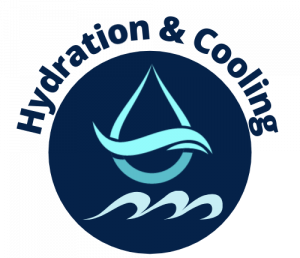Essential guide to high school football water station requirements, covering safety standards, equipment needs, and best practices for keeping athletes properly hydrated during practice and games.
_______________________________
High School Football Water Station Requirements: Meeting Safety Standards & Team Needs
Proper hydration is crucial for high school football players’ safety, performance, and well-being. Setting up effective water stations isn’t just about placing water bottles on a table—it’s about creating a comprehensive hydration system that meets safety standards and supports athletes during intense physical activity. This guide outlines essential requirements for high school football water stations that comply with regulations while ensuring players stay properly hydrated.
Essential Components of High School Football Water Stations
Every effective football water station requires specific equipment to serve the team efficiently. Water stations should be strategically placed, easily accessible, and equipped with sufficient supplies to keep an entire team hydrated throughout practices and games.
A complete high school football water station typically includes multiple water dispensers, individual water bottles, and cooling solutions. The station should accommodate quick access during timeouts and breaks, allowing for efficient hydration without wasting valuable practice or game time. Many athletic associations recommend at least one water station for every 20-25 players, with additional stations during extreme heat.
Required Equipment for Compliant Water Stations
Meeting safety standards requires specific equipment that maintains water quality and accessibility. Essential water station equipment includes:
Water coolers with spigots (5-10 gallon capacity) provide a central water source that can serve multiple players quickly. These should be insulated to keep water cool, especially during hot weather conditions. Individual squeeze bottles (one per player) allow for personalized hydration and prevent the spread of illness. Each bottle should be clearly labeled with the player’s name or number.
Water bottle carriers or racks keep bottles organized and accessible for quick distribution. Portable carts or wagons make it easier to transport water supplies to different field locations. A supply of ice is essential for cooling water and treating potential heat-related conditions. Clean towels should be available for players to cool down, especially during hot weather practices.
Safety Standards and Compliance Requirements
High school athletic associations and health organizations have established specific guidelines for football hydration stations. These requirements aim to prevent heat-related illnesses and ensure player safety, particularly during hot weather conditions.
Most state athletic associations require water stations to be available at all practices and games, with specific guidelines about the quantity of water based on team size and weather conditions. The National Federation of State High School Associations (NFHS) recommends water breaks every 15-20 minutes during hot weather conditions. These guidelines often become stricter as temperatures rise.
The American College of Sports Medicine recommends players consume 7-10 ounces of water every 10-20 minutes during activity. Water station setups must accommodate this level of consumption for the entire team. Many states require schools to have written emergency action plans that include procedures for treating heat-related illness, with water stations playing a central role in prevention.
Weather Considerations for Water Station Setup
Weather conditions significantly impact water station requirements, with additional precautions necessary during extreme temperatures. During hot weather (above 80°F), stations should include both water and sports drinks to replace electrolytes. The number of water stations should increase proportionally with temperature, with at least one additional station recommended for every 10°F increase above 80°F.
Water coolers should be placed in shaded areas whenever possible to keep water cool longer. Some schools use canopy tents to create shade for water stations during extreme heat. Even in cooler weather, hydration remains important, though the focus shifts from cooling to maintaining proper fluid levels.
Best Practices for Water Station Management
Maintaining clean, efficient water stations requires regular attention and proper protocols. Effective management ensures that hydration stations remain sanitary and functional throughout the season.
All water containers and bottles should be thoroughly cleaned and sanitized daily using food-grade sanitizers. Individual bottles must never be shared between players to prevent the spread of illness. Water coolers should be completely emptied after each use, never just topped off.
Designate specific team personnel (managers, assistant coaches, or athletic trainers) to be responsible for water station maintenance and setup. Create a checklist for water station setup and breakdown to ensure consistency. Train all staff and student managers on proper water station protocols, including cleaning procedures and water distribution during breaks.
Hydration Monitoring and Education
An effective water station system includes monitoring player hydration and educating athletes about proper fluid intake. Coaches should implement a system to ensure all players visit water stations during designated breaks. Some teams use a “buddy system” where players are paired to monitor each other’s hydration.
Educate players about the importance of pre-hydration before practices and games, and about recognizing the signs of dehydration. Many successful programs incorporate hydration education into team meetings, emphasizing that proper water intake directly impacts performance and safety.
Get Your Team Properly Equipped for Safe Hydration
Proper hydration is non-negotiable for high school football programs. The right water station setup not only meets safety requirements but also supports player performance and prevents heat-related illness.
Take action today to assess your current water station setup against these requirements. Identify any gaps in equipment, protocols, or education, and develop a plan to address them before your next practice or game.
Your players deserve the best protection against dehydration and heat-related illness. Investing in proper water station equipment and protocols is one of the most important safety measures you can implement for your team.
